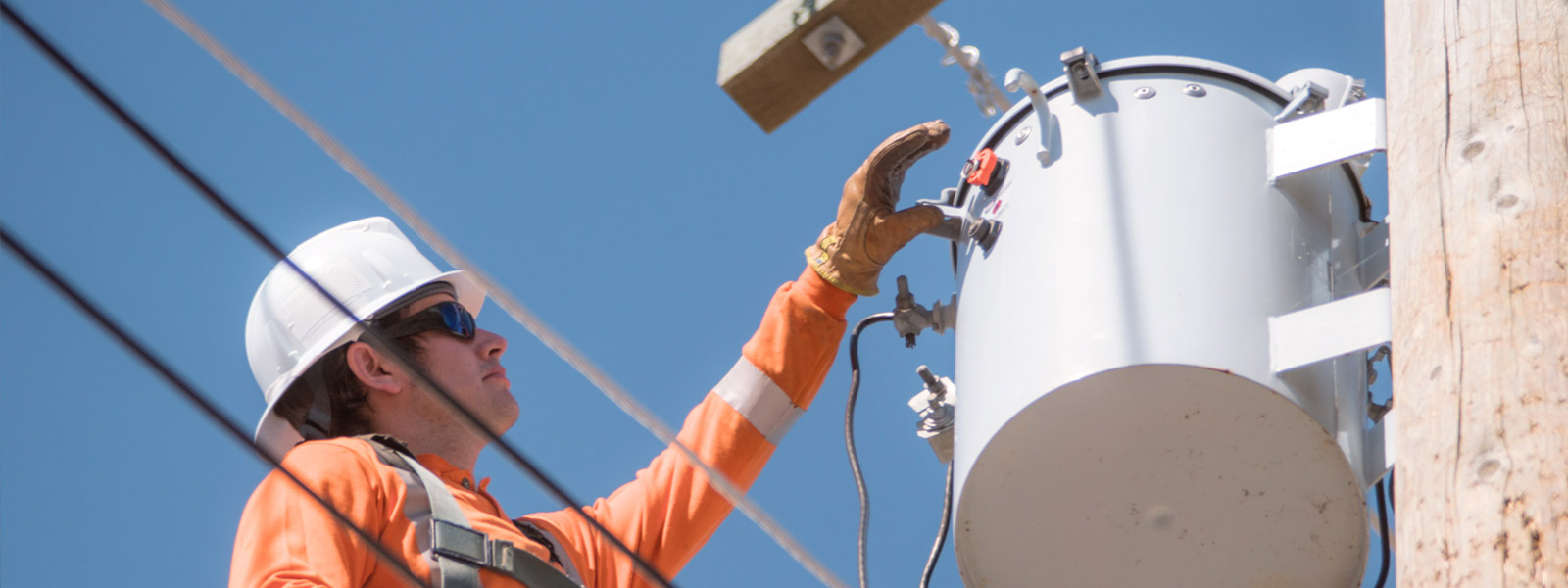
Customer Testimonials
Utilities across North America rely on IFD solutions
The IFD [sensor] does add to the cost of transformers – about 10% more to the smallest units – but PG&E thinks it is worth it in the long run. IFD [sensors] make troubleshooting easier and enhance safety.
Including IFD [sensors] in transformers is not only a good risk-reduction practice, but also produces an excellent return on the initial investment. More strategically, the IFD represents another small step on the journey to a distribution system where, more and more, information is used to improve customer service and the effective utilization and safety of valuable resources.
I used to be a lineman. When you have a transformer fuse cut-out explode in your face and a faulty transformer dump hot oil on you, it isn’t something you want to experience again. IFD technology is the greatest thing since ice cream. I would recommend this to all utilities.
When a transformer is not operational, it takes time and effort to reconstruct everything and restore power. I wholeheartedly recommend every utility to look into the IFD technology.
The IFD sensor solved 70% of my problems, TempPatrol solves the rest.
This is the right thing to do for our utility.
This will help us improve our SAIFI numbers by preventing unnecessary blinks on the system when closing in on a faulted transformer. We have some hi-tech factories on our system that get very angry when blinks cause their sensitive equipment to shut down. It will also help our SAIDI numbers by reducing the duration of outages.
Some of our linemen close in on bayonet fuses on a pad-mount when trying to re-energize it, even though there is no fault close rating. We had a close call recently where a lineman almost got hurt doing that. The IFD would prevent this.
The thing I feared the most in all my years was refusing transformers. When refusing a line section, you are able to patrol the line and nearly always see the problem, but with a transformer you never know if the unit is faulty and what the consequences would be of reenergizing it.
The IFD makes sense on pad-mounts because sometimes it’s difficult to tell if the fault is in the transformer or the cable.
Many of our transformers are located in rear lot line locations which are not accessible by bucket truck, which means we have to climb poles and put ourselves at risk. The IFD will prevent that in many cases.
Up to now, there has not been a sound, reliable test (without disconnecting the transformer and applying voltage) to detect faulted pole-mount transformers.
With the IFD, our line crews will take down fewer good transformers.
This will help us find bad transformers immediately, instead of having to revisit the same transformer several times before we finally take it down.
Great idea. We figure about 1 in 4 transformers are usually faulty. If you will know which one has the fault, you won’t waste any time on that transformer.
Great product, and it’s an easy business case – the IFD is a capital expenditure vs. an O&M expense.
Finally, a safety product that makes us money.
Many of our transformers are located across far distances. This will help avoid wasting time going back and forth.
I had a case where I closed in on a faulted transformer, and it spilled oil all over an expensive car located below it. This was an expensive public relations problem for our utility.
Since we started installing transformers with IFD’s, it is now much easier and faster to troubleshoot 3 ph overhead banks where a fault has occurred.
For the price why wouldn’t we have it?
Speaking to a Powerline Technician (the new title for linemen) about the IFD and I thought the statement he made about his 33 years in the trade was very interesting. He said the thing he feared the most in all his years was refusing transformers. He said refusing a line section, you were able to patrol the line and nearly always see the problem, but a transformer you never knew if the unit was faulty and what the consequences would be.
The real operational advantage of using IFDs is that they remove the faulted transformers from the time consuming (return to service or replace) decision-making process.
Great idea, outperform their competitors on restoration time.
Easy business case, capital vs O&M.
There is no doubt the device would be good for the safety of employees to prevent closing a transformer on a fault.
Good, simple device.



